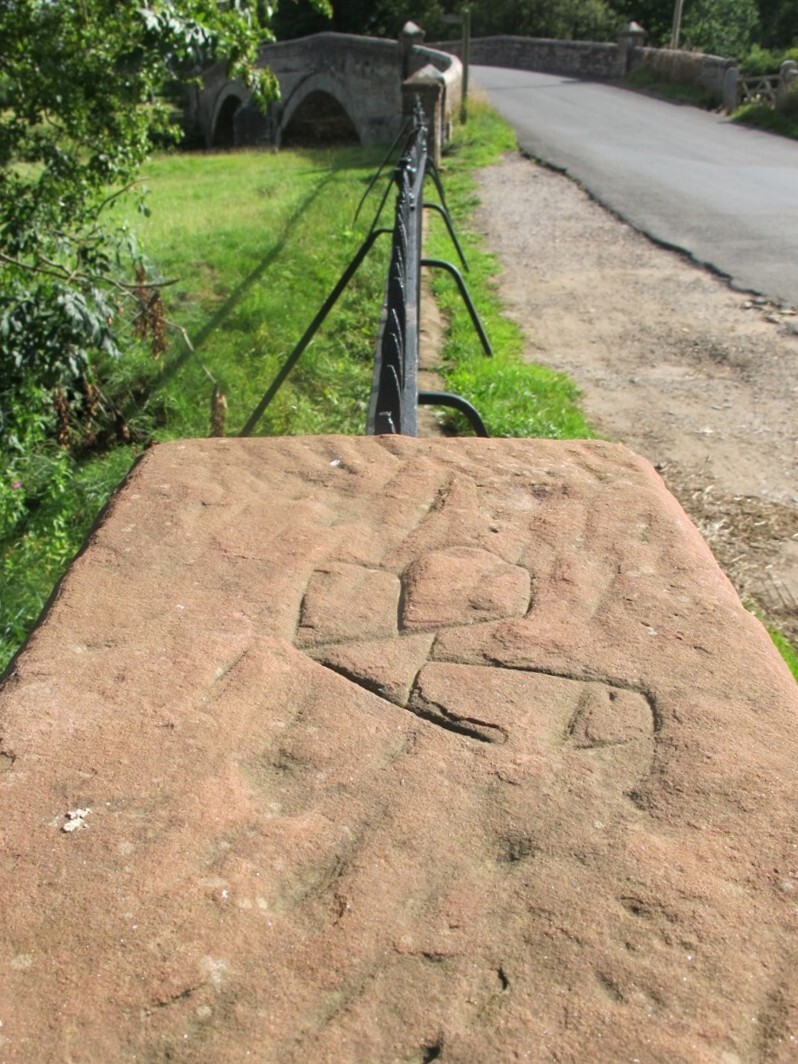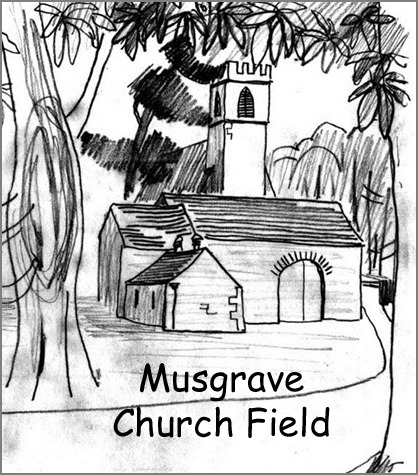Historic Iron Railings by Musgrave Bridge
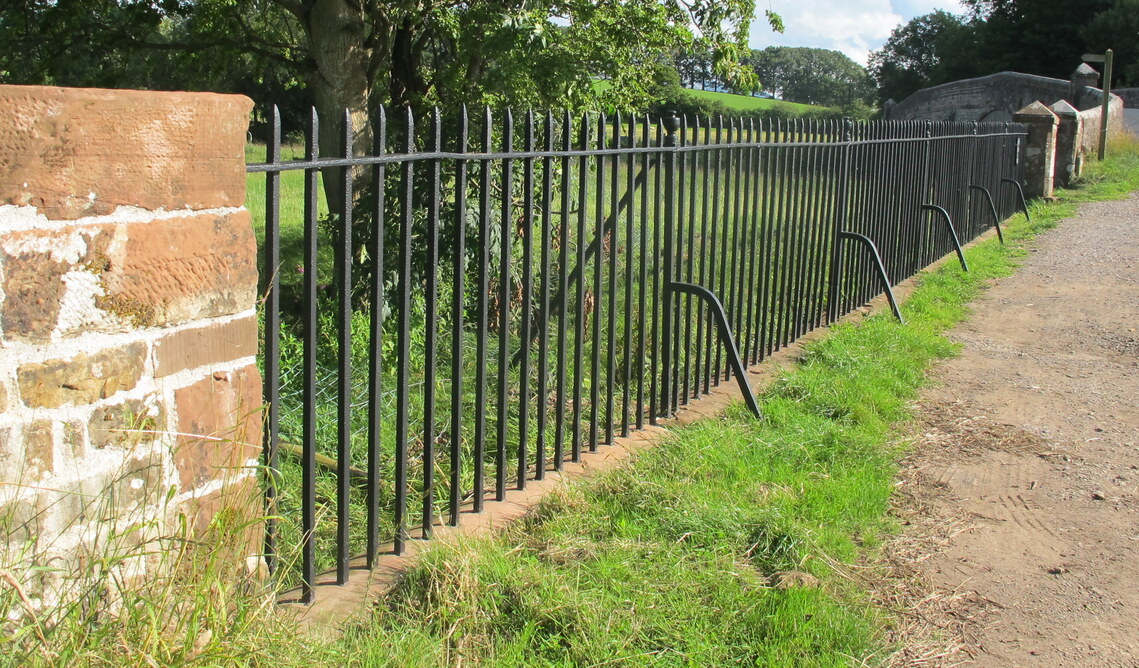
The magnificent Musgrave Bridge was built over the Eden in 1825 at a cost of £1,630. But this made flooding much worse in the old Musgrave Rectory and St. Theobald's Church just upstream. In 1829, magistrates recommended that a section of the new road wall be replaced with railings to let floods through and a culvert be dug. William Reed supplied 47cwt, 0q, 20lbs of wrought iron railings in 1830 for £35 5s 6d.

But the Rectory and Church still flooded badly. In 1845, the Church was rebuilt several feet higher on the same site.The Rectory was finally demolished in 1886.
The railings remain today on both sides of the B6259. The ones by the Church Field were restored in 2008 with a grant from Awards for All. A specialist ironwork company (Jason Mullins) repaired, cleaned and sand-blasted them. A section of the sandstone base and some finials were replaced. The railings were cold-galvanised with Zinga water-based zinc phosphate primer and a black topcoat. A new iron gate replaced a wooden one. The history of the railings and their restoration was reported in the CWAAS Newsletter 61 p.13 (Summer 2009) .
All was well until December 2015 when Storm Desmond struck Cumbria – the worst floods in living memory. Musgrave Bridge had been repointed and strengthened in 2006 and was undamaged but the water was many feet deep on the Field and flowing very fast. Sadly some sheep drowned, and many fences damaged. The top of retaining wall at the north end of the iron railings collapsed, due to decaying 200-year old mortar, taking down a section of the railings and splitting the sandstone base.
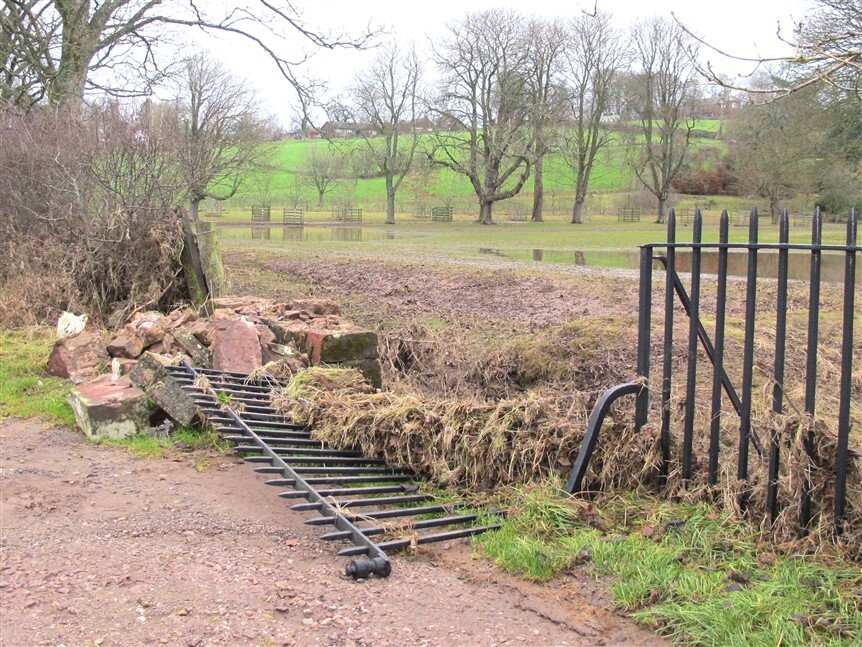
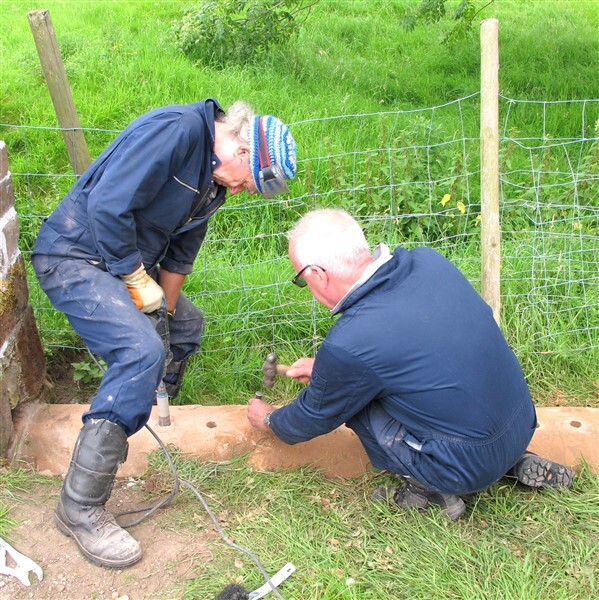

Generous grants from the John Strutt Charity, the Hadfield Trust and the Ironmongers Company enabled the Trust to repair them. The work was done by Paul Thompson, David Gosling, Ed Crollman and Colin Marston. Sandstone was supplied by Frank Walton. Many thanks to them all.
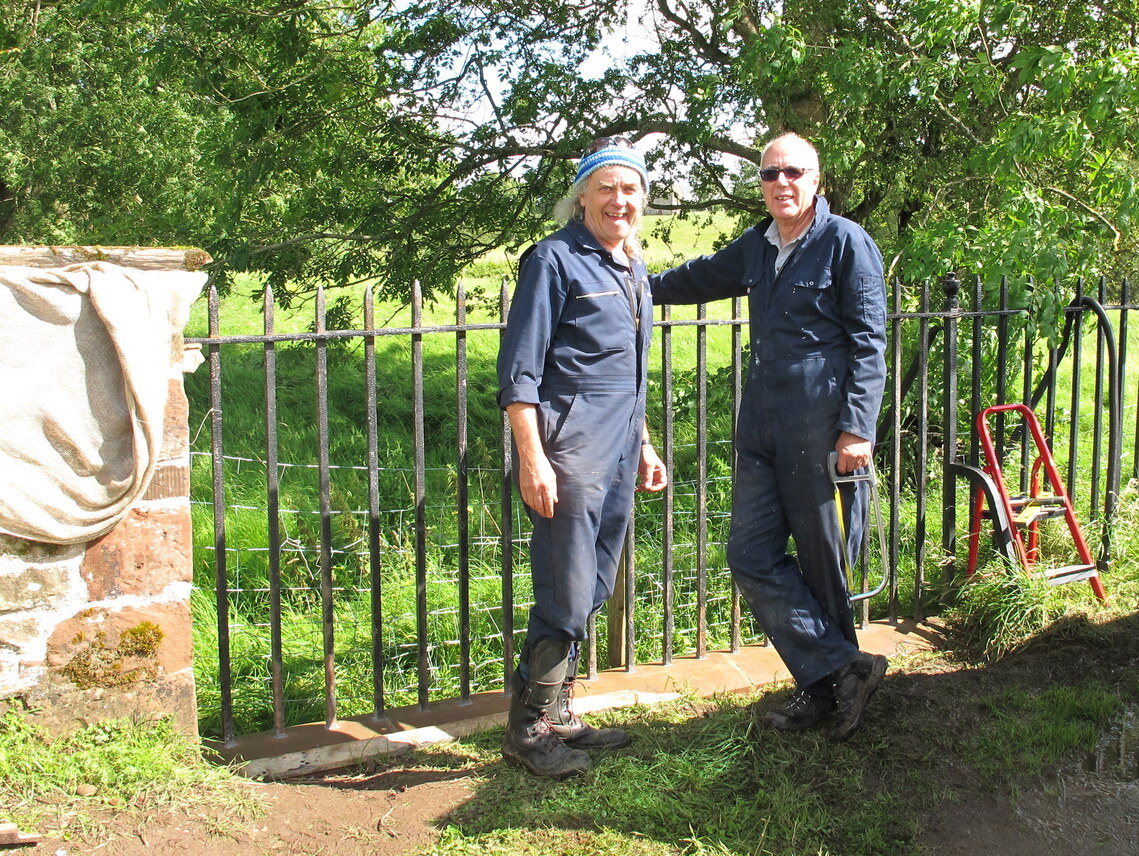
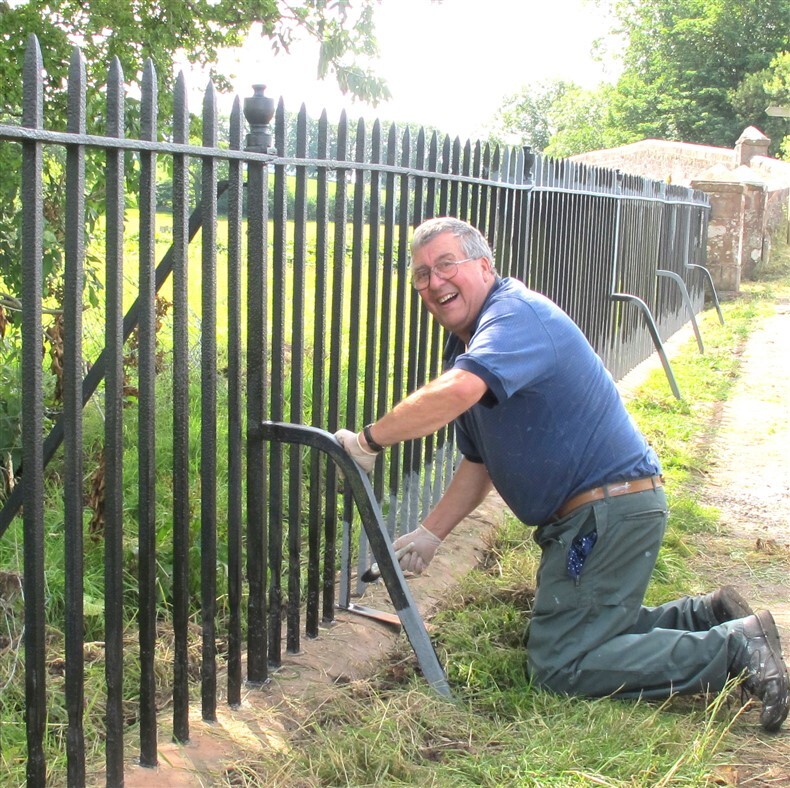

(click to enlarge)
There are some initials carved as graffiti on the stone gateposts.
There are also the initials AJB professionally carved on the sandstone wall (now rebuilt) supporting the railings, as shown below. Is this graffiti, or a mason's mark? The bridge was built in 1825 for £1,630 by three stonemasons from Orton,
James Brown, William Broadrick and George Broadrick, who had a contract for the maintenance of the bridge for 7 years. James Brown also did the plan and specification and worked on the flood relief in 1830.
James Brown, of Gaisgill, Orton and his wife Bella Ann had a son Absolam, on 2 October 1804. Absolam would have been 25 when the railings were installed. James was a family name, so Absolam could have been known as Absolam James Brown (middle names are not recorded). Or he could have been working with his father at Musgrave and the inscription could be a family inscription of AB and JB combined? In any case, it acts as a memorial to all the builders who did such a magnificent job.
[James Brown et al also built Hoff Bridge (1822 for £578), Cliburn Town Bridge (1823 for £458) and Cliburn Mill Bridge (1823 for £1,400) - see County Bridge Archives]
